Top 6 current construction trends

3D printing
While additive manufacturing isn’t entirely new, its rapidly-growing use in the construction industry is. The advantages of this method for printing infrastructure such as concrete is quick construction, low cost, and a great deal less waste being produced. 3D printing could play a huge role in the production of low-cost housing in impoverished and war-torn areas; only the necessary raw materials are produced for such products, and 3D printer ‘ink’ can be created with recycled plastic. 3D printing of buildings is also well on its way to being used for off-planet habitats on Mars and the Moon, to the extent that NASA plans to use sintering techniques on lunar dust, enabling construction without the difficult transportation of materials from Earth.
Green building
While sustainability is an old concept, the features and technology which allow it to evolve are constantly growing apace. Solar panels and plumbing fixtures which save water, once costly and as such considered a luxury, are affordable and widely-used. Now, there are many renewable energy options for new builds, and a great deal of scope for the use of recycled products. The concept of green building has moved on from being merely stylish to necessary and socially responsible, and materials are judged on their levels of sustainability through building certification programs.
Apps
Apps are now playing an integral role in the construction industry, ensuring instantaneous access to shared information, whether on the floor or within management. Safety apps like iAuditor are on the rise, lessening on-site accidents globally, and now, drones are being used to survey sites from above, allowing previously unseen views and the production of accurate 3D area models.
One of the most popular uses of apps in this industry is Building Information Modelling, which is a full digital representation of any facility. It is shared software to which any given worker can have access, ensuring total visibility of operations.
Micro-buildings
The tiny house movement advocates the concept of living simply in a small space of under 1000 square feet. In America specifically, 76 percent of homeowners live from wage to wage to pay for the roof over their heads, leading to a cycle of debt. 78 percent of tiny home owners are able to own their houses either outright or within a short space of time, and the concept is made further attractive by the ideals of self-sufficiency and environmental consciousness the movement promotes.
Concrete roofing tiles
BoralPure Smog-Eating Tiles remove nitrogen oxide from the atmosphere, improving the quality of the immediate environment. They contain the photocatalyst titanium dioxide, oxidising the vehicle-emitted poison. The harmless precipitate left behind in the chemical reaction washes away in the rain, and the UV light created naturally by this technology helps break down organic substances that occur on roofs. If the tiles ever require removal, they can be recycled for new structures or railways.
Polyaspartic coatings
Polyaspartic coatings can be used on metal and concrete, ensuring damage resistance against UV light, chemicals, and general abrasion. The product ensures good colour stability and ease of cleaning, with an ultra-quick curing time. Polyaspartic coatings can be applied at a wide range of temperatures, allowing for a broader application time and making it perfect for larger commercial projects. The coatings are created using raw materials from Bayer MaterialScience, and ensure improved productivity across the board.
fuente: http://www.constructionglobal.com/top10/696/Top-6-current-construction-trends












